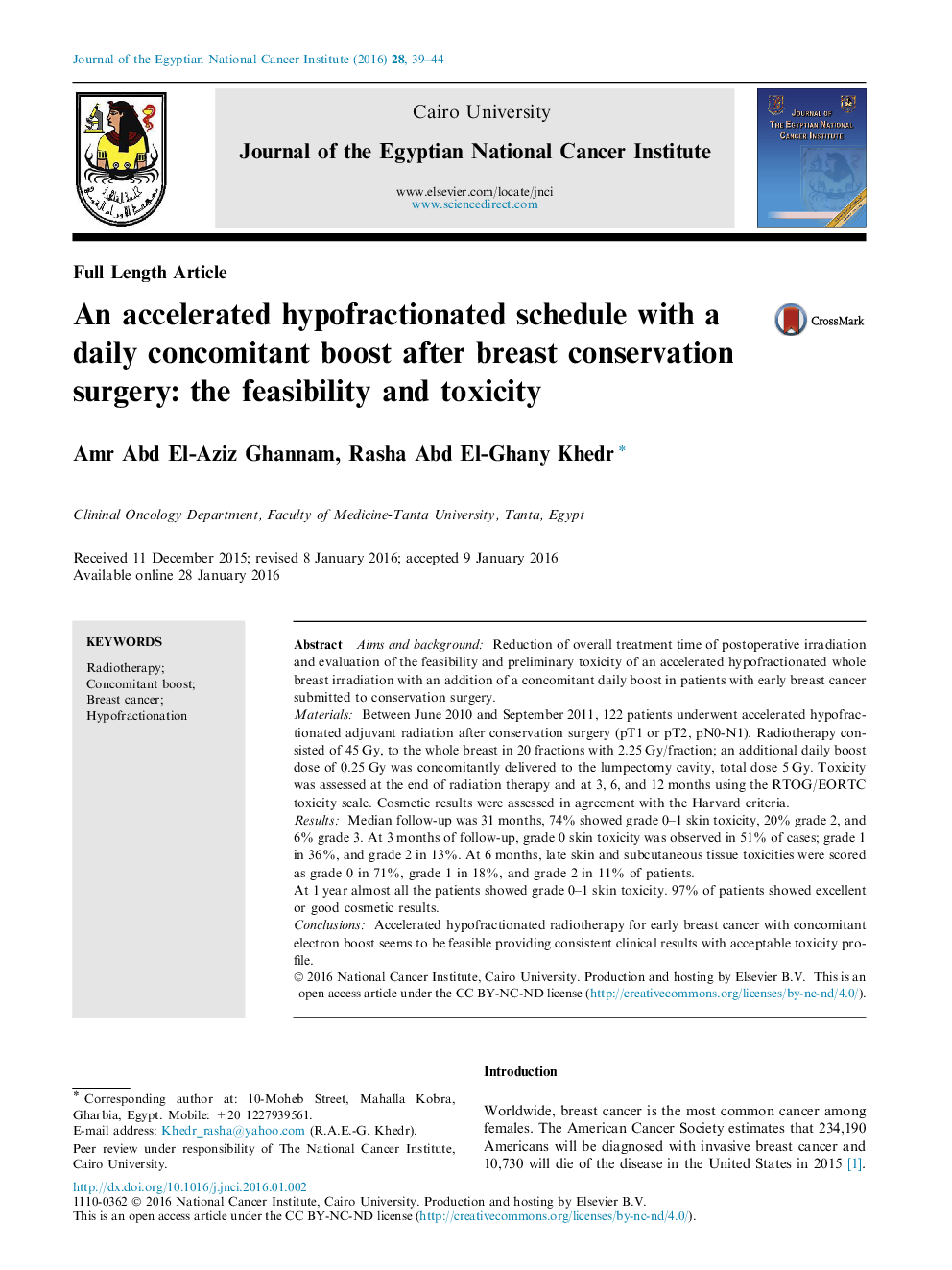| Article ID | Journal | Published Year | Pages | File Type |
|---|---|---|---|---|
| 3988890 | Journal of the Egyptian National Cancer Institute | 2016 | 6 Pages |
Aims and backgroundReduction of overall treatment time of postoperative irradiation and evaluation of the feasibility and preliminary toxicity of an accelerated hypofractionated whole breast irradiation with an addition of a concomitant daily boost in patients with early breast cancer submitted to conservation surgery.MaterialsBetween June 2010 and September 2011, 122 patients underwent accelerated hypofractionated adjuvant radiation after conservation surgery (pT1 or pT2, pN0-N1). Radiotherapy consisted of 45 Gy, to the whole breast in 20 fractions with 2.25 Gy/fraction; an additional daily boost dose of 0.25 Gy was concomitantly delivered to the lumpectomy cavity, total dose 5 Gy. Toxicity was assessed at the end of radiation therapy and at 3, 6, and 12 months using the RTOG/EORTC toxicity scale. Cosmetic results were assessed in agreement with the Harvard criteria.ResultsMedian follow-up was 31 months, 74% showed grade 0–1 skin toxicity, 20% grade 2, and 6% grade 3. At 3 months of follow-up, grade 0 skin toxicity was observed in 51% of cases; grade 1 in 36%, and grade 2 in 13%. At 6 months, late skin and subcutaneous tissue toxicities were scored as grade 0 in 71%, grade 1 in 18%, and grade 2 in 11% of patients.At 1 year almost all the patients showed grade 0–1 skin toxicity. 97% of patients showed excellent or good cosmetic results.ConclusionsAccelerated hypofractionated radiotherapy for early breast cancer with concomitant electron boost seems to be feasible providing consistent clinical results with acceptable toxicity profile.
